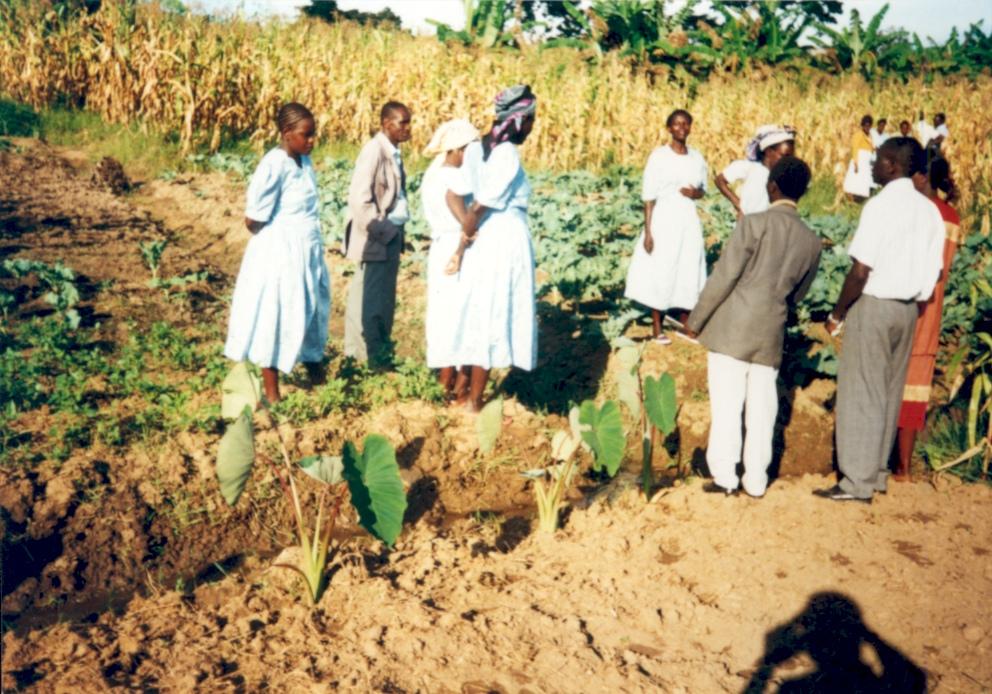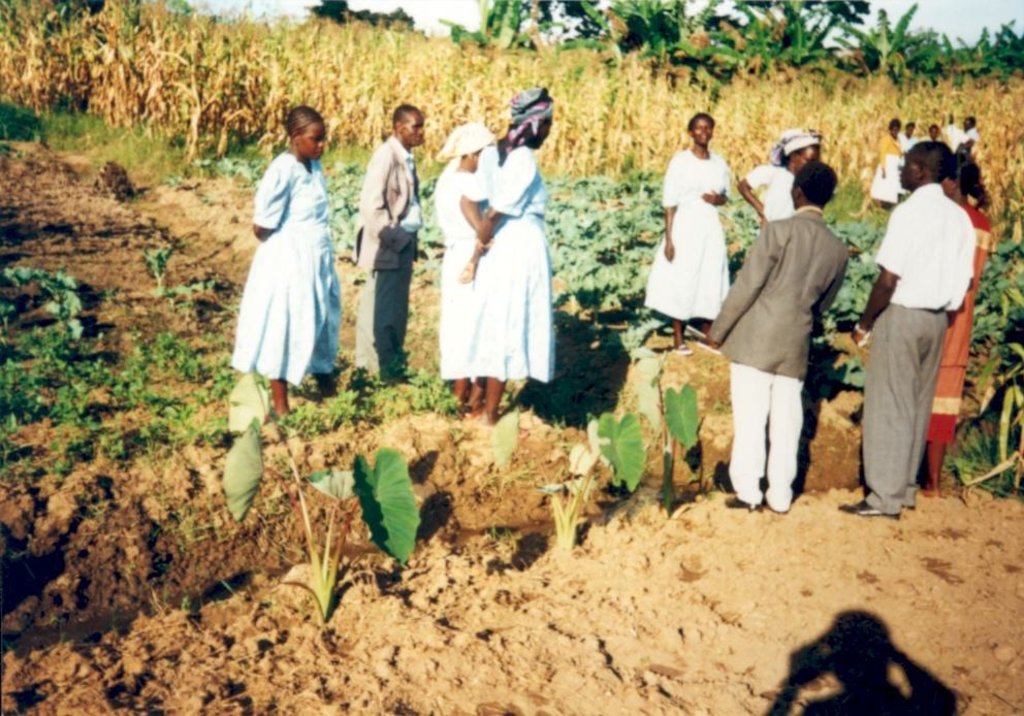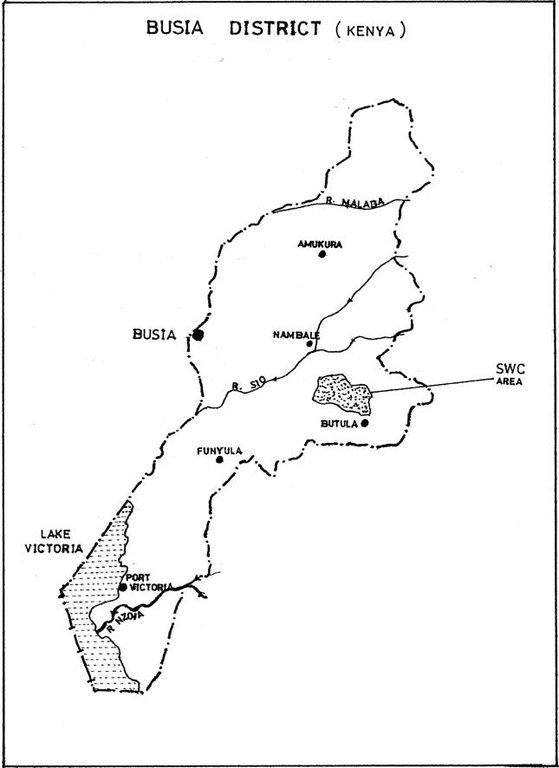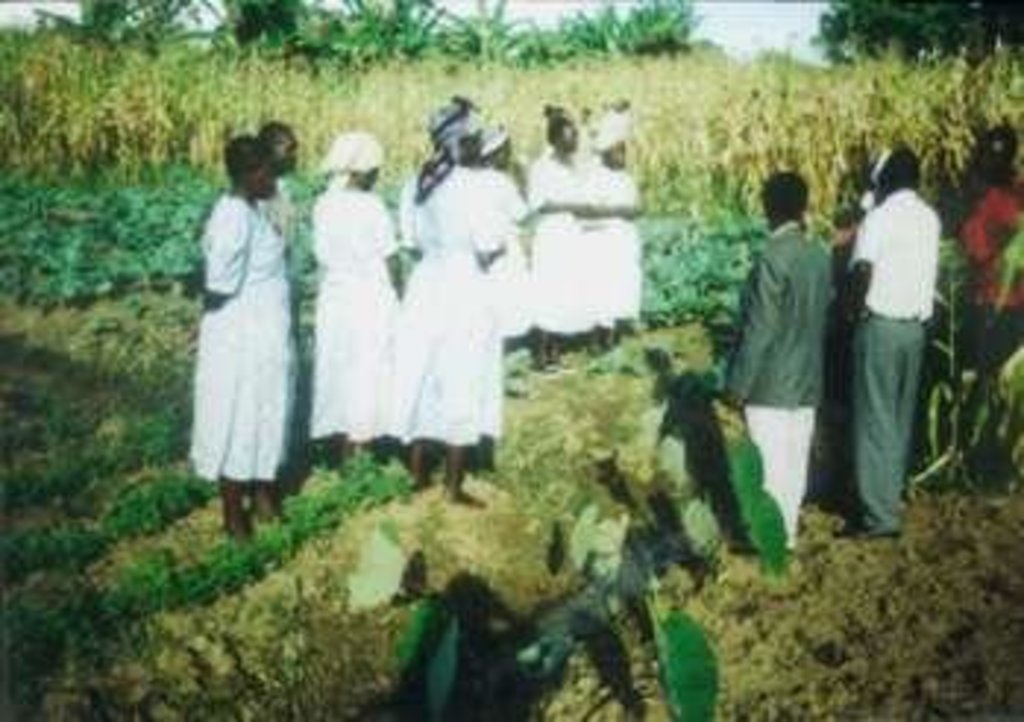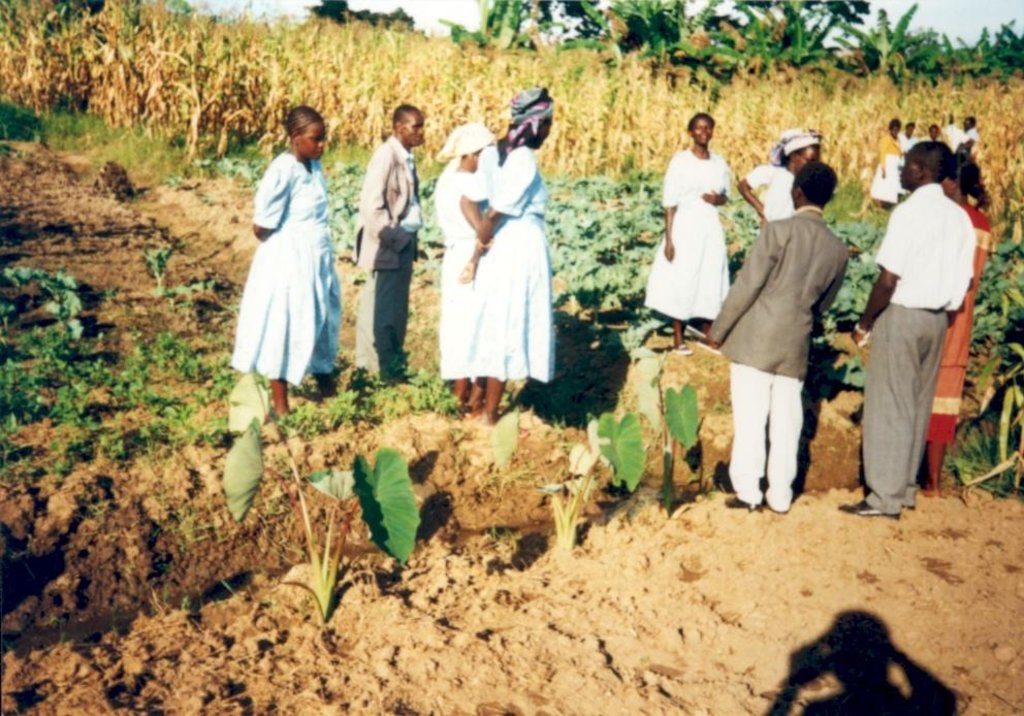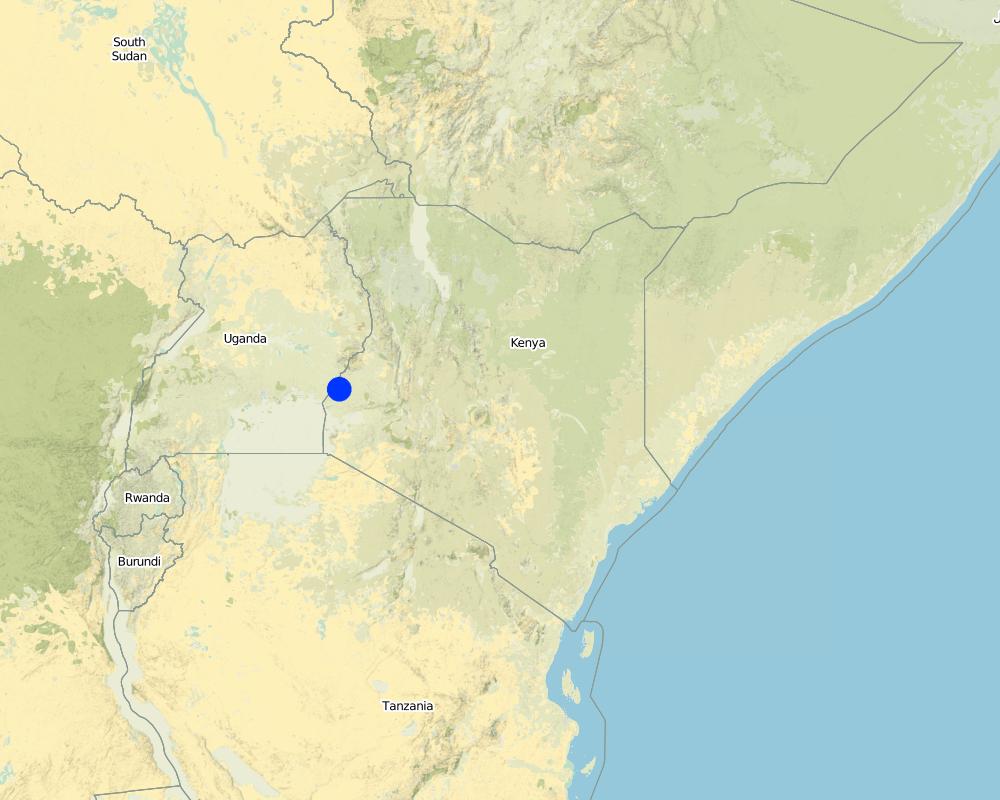Women Group Approach - Busia [Kenya]
- Creation:
- Update:
- Compiler: Unknown User
- Editor: –
- Reviewer: Fabian Ottiger
approaches_2359 - Kenya
View sections
Expand all Collapse all1. General information
1.2 Contact details of resource persons and institutions involved in the assessment and documentation of the Approach
Key resource person(s)
SLM specialist:
Bittar Odoyo
Kenya
SLM specialist:
Owendo Thomas Junior
MOARD
Box 28. Busia
Kenya
1.3 Conditions regarding the use of data documented through WOCAT
The compiler and key resource person(s) accept the conditions regarding the use of data documented through WOCAT:
Yes
2. Description of the SLM Approach
2.1 Short description of the Approach
group approach where women groups are visited by local specialists for on-farm demonstrations on use of double dug beds
2.2 Detailed description of the Approach
Detailed description of the Approach:
Aims / objectives: Women group approach to promote vegetable growing for improvement of food availability to the home and improvement of moisture availability and rooting depth in the home gardens. Improve moisture availability and rooting depth in the home gardens.
Methods: Group farm is used for demonstrating the performance of the technique and after seeing the benefits the individualmembers of the group are expected to transfer the technology into their own farms. At the group level, the group plot is used as a teaching class for all the members where they observe and participat in the preparation of the beds, planting, weeding upto harvesting of the produce. The produce is sold to raise funds for the groups investiments
2.3 Photos of the Approach
2.5 Country/ region/ locations where the Approach has been applied
Country:
Kenya
Region/ State/ Province:
Western/Busia
Map
×2.6 Dates of initiation and termination of the Approach
Indicate year of initiation:
1994
Year of termination (if Approach is no longer applied):
2000
2.7 Type of Approach
- project/ programme based
2.8 Main aims/ objectives of the Approach
The Approach focused mainly on SLM with other activities (Fertility improvement, kitchen gardening, nutritional improvement)
promote food production for rural families through techniques that enhance moisture availability. - to target the women who are the main producers to ensure food availabity for the whole family
The SLM Approach addressed the following problems: food security for the rural farm families and inadequate moisture availability for vegetable production on kitchen gardens. Poor nutritional provision for rural families.
2.9 Conditions enabling or hindering implementation of the Technology/ Technologies applied under the Approach
social/ cultural/ religious norms and values
- hindering
Gender responsibilty hinders women from making major decisions on the farms like SWC development.
Treatment through the SLM Approach:
availability/ access to financial resources and services
- hindering
for hiring labour for construction/ establishment
Treatment through the SLM Approach:
legal framework (land tenure, land and water use rights)
- enabling
The existing land ownership, land use rights / water rights moderately helped the approach implementation: each family has own land and thus motivated to improve its productivity through double beds
- hindering
men have the ownership of the title deds
Treatment through the SLM Approach: involve men during technology disemination to give support.
other
- hindering
lack of adequate manure for improvement of soil fertility
Treatment through the SLM Approach: Involving men in the womenr group o appreciate the effort of women and back them
3. Participation and roles of stakeholders involved
3.1 Stakeholders involved in the Approach and their roles
- local land users/ local communities
Working land users were mainly women (the core target groups were women through women groups but individual farmers were also targeted)
Objective was to improve food availability for kitchen gardens and involve more women than men. Men only provided backing to women. Men make major decisions on farm development. The women groups comprise women from both poor and average wealthy, who are governed by rules of their groups. Some few men are incorporated in these groups for supporting women
- NGO
KIOF - Young mens christian association (YMCA-Busia)
3.2 Involvement of local land users/ local communities in the different phases of the Approach
| Involvement of local land users/ local communities | Specify who was involved and describe activities | |
|---|---|---|
| initiation/ motivation | interactive | Mainly:public meetings; partly: workshops/seminars; the groups were sensitised through meetings with specialists. Field training/demonstrations were also carried out |
| planning | self-mobilization | public meetings; the women group members were invited for meetings by specialists where activities planning was carried out. |
| implementation | interactive | Mainly: group work; partly: casual labour; rich farmers can afford hired labour, but others benefit from group work |
| monitoring/ evaluation | none | |
| Research | none |
3.4 Decision-making on the selection of SLM Technology/ Technologies
Specify who decided on the selection of the Technology/ Technologies to be implemented:
- mainly SLM specialists, following consultation with land users
Explain:
Consultative. The technology was on trial stage initially through few groups but the demand increased
Decisions on the method of implementing the SLM Technology were made by mainly by SLM specialists with consultation of land users. Land user driven (bottom-up). Specialists exposed the land users who later demanded it through women groups
4. Technical support, capacity building, and knowledge management
4.1 Capacity building/ training
Was training provided to land users/ other stakeholders?
Yes
Specify who was trained:
- land users
- school children/students, teachers
Form of training:
- farmer-to-farmer
- demonstration areas
- public meetings
Subjects covered:
manure handling and quality maintenance, compst making and moisture conservation
4.2 Advisory service
Do land users have access to an advisory service?
Yes
Specify whether advisory service is provided:
- on land users' fields
Describe/ comments:
Name of method used for advisory service: women group visits and training; Key elements: group demonstrations and farm visits, individual member farm visits, participatory learning and doing; 1) Mainly: non-governmental agency, Partly: government's existing extension system 2) Mainly: non-governmental agency, Partly: government's existing extension system; Extension staff: mainly government employees 3) Target groups for extension: land users; Activities: demonstration on establishment of double beds
Advisory service is very adequate to ensure the continuation of land conservation activities; the NGO promoting the technology had few staff and was mainly relying on government extension in the project area
4.3 Institution strengthening (organizational development)
Have institutions been established or strengthened through the Approach?
- yes, moderately
Specify the level(s) at which institutions have been strengthened or established:
- local
Specify type of support:
- capacity building/ training
4.4 Monitoring and evaluation
Is monitoring and evaluation part of the Approach?
Yes
Comments:
economic / production aspects were ad hoc monitored
area treated aspects were regular
no. of land users involved aspects were regular
management of Approach aspects were None
There were no changes in the Approach as a result of monitoring and evaluation
4.5 Research
Was research part of the Approach?
Yes
- efficiency of the system
Give further details and indicate who did the research:
determined through its potential to increase yields of crops
Research was carried out on-farm
5. Financing and external material support
5.1 Annual budget for the SLM component of the Approach
If precise annual budget is not known, indicate range:
- 2,000-10,000
Comments (e.g. main sources of funding/ major donors):
Approach costs were met by the following donors: national non-government (-): 20.0%; local community / land user(s) (-): 80.0%
5.2 Financial/ material support provided to land users
Did land users receive financial/ material support for implementing the Technology/ Technologies?
No
5.3 Subsidies for specific inputs (including labour)
- equipment
| Specify which inputs were subsidised | To which extent | Specify subsidies |
|---|---|---|
| tools | ||
- agricultural
| Specify which inputs were subsidised | To which extent | Specify subsidies |
|---|---|---|
| seeds | ||
| fertilizers | ||
Comments:
Women group members worked on each others farm
5.4 Credit
Was credit provided under the Approach for SLM activities?
No
6. Impact analysis and concluding statements
6.1 Impacts of the Approach
Did the Approach help land users to implement and maintain SLM Technologies?
- No
- Yes, little
- Yes, moderately
- Yes, greatly
increase the depth of tillage and use of manure to improve moisture availability and fertility of land.
Did other land users / projects adopt the Approach?
- No
- Yes, little
- Yes, moderately
- Yes, greatly
four other NGOs are using the approach of extension through women groups
6.3 Sustainability of Approach activities
Can the land users sustain what has been implemented through the Approach (without external support)?
- uncertain
6.4 Strengths/ advantages of the Approach
| Strengths/ advantages/ opportunities in the land user’s view |
|---|
| improves vegetable supply for the kitchen |
| improves nutrition |
| better yields |
| increased moisture |
| the approach has helped them to learn from one another. |
| encouraged development of leadership skills |
| Strengths/ advantages/ opportunities in the compiler’s or other key resource person’s view |
|---|
| key members of the family, woman/children (How to sustain/ enhance this strength: the women group can be tranformed into a group to provide soft credit to facilitate commercial production of vegetables to pay back for the investiment) |
| acts as group pressure for adoption |
| trains farmers in their familiar surroundings |
| women form the backbone of farmers and are best target |
6.5 Weaknesses/ disadvantages of the Approach and ways of overcoming them
| Weaknesses/ disadvantages/ risks in the land user’s view | How can they be overcome? |
|---|---|
| unfair distribution of benefits by inactive members. |
| Weaknesses/ disadvantages/ risks in the compiler’s or other key resource person’s view | How can they be overcome? |
|---|---|
| encouraged laziness for certain individuals | duty roster and division of responsibility |
| suppressing of the opinion of the weak ones |
Links and modules
Expand all Collapse allLinks
No links
Modules
No modules


